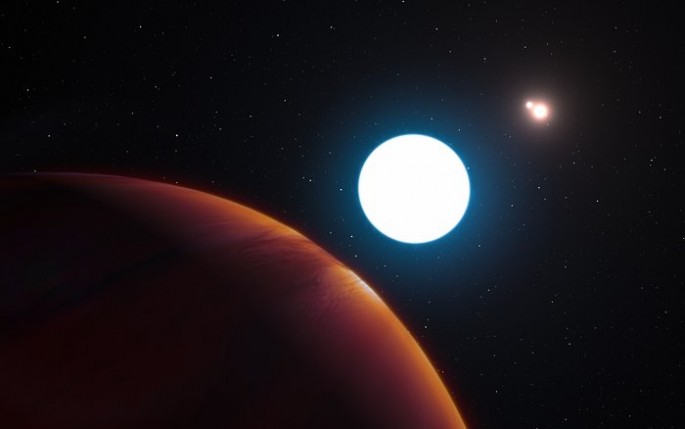Astronomers have detected a new alien world with triple sunrises and sunsets for half of its year and and the other half with days where the three suns never set. This newly discovered exoplanet is located in the Centaurus constellation that possesses three stars where this planet completes one orbit within more or less 500 Earth years.
According to lead author of the study, Kevin Wagner from the University of Arizona, he is thrilled to witness and discover a part of the universe that nobody else has seen before. Wagner adds that these amazing triple sunrises and sunsets are only the beginning, as the team believes that there are more surprises in their continued exploration.
Triple star systems are considered extremely rare by astronomers, which makes this the fifth discovery. This giant alien world known as HD 131399Ab also holds the record for the biggest known orbit within a multi star system.
This massive orbit is twice as large as Pluto's or around 550 years, which is how long it will take for this planet to orbit its brightest star. The two other suns orbit each other as the two of them also orbits this brightest star.
The exoplanet HD 131399Ab is also a super planet, comparable to a supersized Jupiter, with four times as much mass as the gas giant. Scientists first thought that this massive orbit and three companion stars can ultimately kick out this exoplanet out of this system due to powerful gravitational forces, but this did not happen.
Within the duration of its orbit, three stars can be visible on one day on the planet, with triple sunrises and sunsets, for both day and night. About one fourth of its year, or 100 to 140 Earth years, the three suns do not set on the planet with continuous daylight. While the largest sun is rising, the binary suns are also setting.
According to co-author of the study, astronomer Daniel Apai from the University of Arizona, since this planet possesses three suns, it will experience a bizarre variety of sunrises and sunsets, resulting in a strange calendar.
With the help of the Very Large Telescope located at the European Southern Observatory in Chile, astronomers determined this planet to be 320 light years away, which is also one of the few that are directly photographed. Most exoplanets are detected with their transits around their suns, as telescopes detect these dips in brightness when a planet blocks light from their sun.
This new study is published in the journal Science.



























